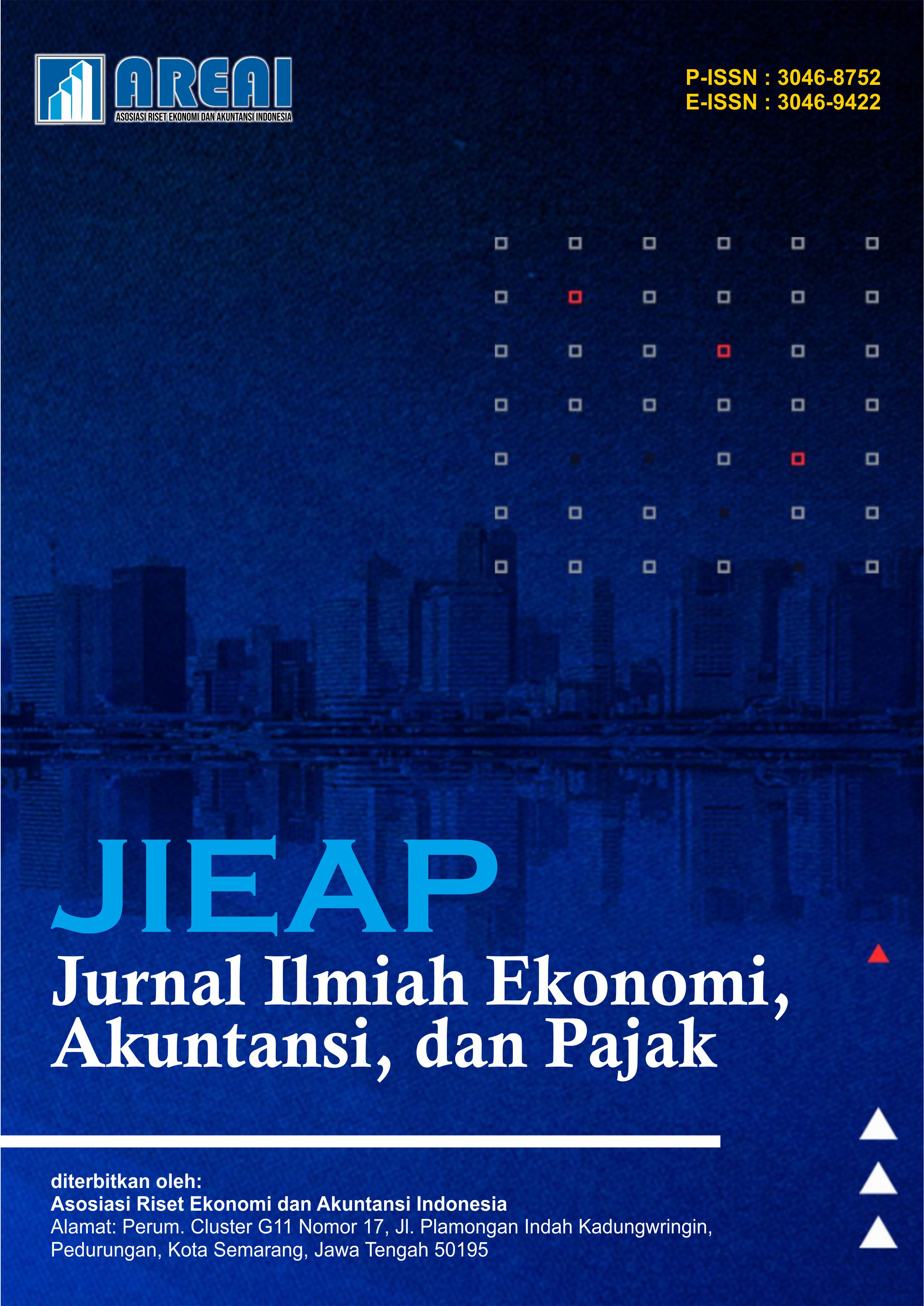Analisis Profitabilitas dan Struktur Modal terhadap PPh Badan Terhutang pada Perusahaan Manufaktur Industri Pupuk Organik
DOI:
https://doi.org/10.61132/jieap.v2i3.1567Keywords:
Capital Structure, Corporate Income Tax, Financial Statements, Organic Fertilizer Industry, ProfitabilityAbstract
This study aims to examine and analyze the effect of profitability and capital structure on corporate income tax (PPh) payable at PT Kediri Tani Sejahtera during 2018–2022. The research uses a quantitative descriptive approach with primary data obtained through interviews and documentation of the company’s financial statements, including annual income statements and balance sheets. The analysis involves calculating profitability ratios, namely Return on Assets (ROA) and Return on Equity (ROE), as well as capital structure ratios, namely Debt to Asset Ratio (DAR) and Debt to Equity Ratio (DER), and comparing them with the annual corporate income tax payable. The results indicate that net profit before tax and PPh payable were below 4.8 billion IDR annually. Trend Moment analysis shows that profitability has a significant relationship with PPh payable, while capital structure also affects PPh, though not directly. The company’s asset size impacts depreciation recognized as an expense in the income statement, influencing the tax amount due. This study confirms that managing profitability and capital structure is crucial for tax planning and compliance in manufacturing companies, particularly in the organic fertilizer industry.
Downloads
References
Brigham, E., & Houston, J. (2011). Fundamental of financial management (Edisi 10). Jakarta: PT Salemba Empat.
Fahmi, I. (2015). Analisis laporan keuangan. Bandung: Alfabeta.
Hery. (2018). Analisis laporan keuangan: Integrated and comprehensive edition (3rd ed.). Jakarta: Grasindo.
Imanuddin, B., & Suryanata, I. G. N. P. (2019). Profitabilitas dalam perusahaan. Jurnal Manajemen dan Bisnis, 8(2), 342–353.
Kasmir. (2016). Analisis laporan keuangan (Edisi ke-4). Jakarta: PT Raja Grafindo Persada.
Kasmir. (2018). Analisis laporan keuangan (Edisi ke-4). Jakarta: PT Raja Grafindo Persada.
Kasmir. (2019). Analisis laporan keuangan (Edisi ke-4). Jakarta: PT Raja Grafindo Persada.
Mardiasmo. (2018). Perpajakan (Edisi revisi). Yogyakarta: Andi.
Nursasmita, E. (2021). Pengaruh struktur modal, profitabilitas, dan biaya operasional terhadap pajak penghasilan badan terutang. Jurnal Akuntansi Universitas Negeri Surabaya, 9(3), 30–41. https://doi.org/10.26740/akunesa.v9n3.p30-41
Putu, L. C., & Cahyani, G. (2019). Pengaruh tarif pajak, pemahaman perpajakan, dan sanksi perpajakan. E-Jurnal Akuntansi Universitas Udayana, 26, 1885–1911.
Resmi, S. (2014). Perpajakan: Teori dan kasus. Jakarta: Salemba Empat.
Soemarso. (2010). Dasar-dasar pengantar akuntansi I. Yogyakarta: Badan Penerbit Universitas Gadjah Mada.
Srikalimah. (2017). Likuiditas dan leverage dalam memprediksi financial distress (studi empiris pada perusahaan manufaktur yang terdaftar di BEI periode…). Jurnal Akuntansi, 2(1).
Uyuni, A. N. (2021). Analisis konsep struktur modal. Jurnal Ekonomi dan Bisnis, Juni, 1–12.
Waluyo. (2013). Perpajakan Indonesia. Jakarta: Salemba Empat.
Downloads
Published
How to Cite
Issue
Section
License
Copyright (c) 2025 Jurnal Ilmiah Ekonomi, Akuntansi, dan Pajak

This work is licensed under a Creative Commons Attribution-ShareAlike 4.0 International License.





